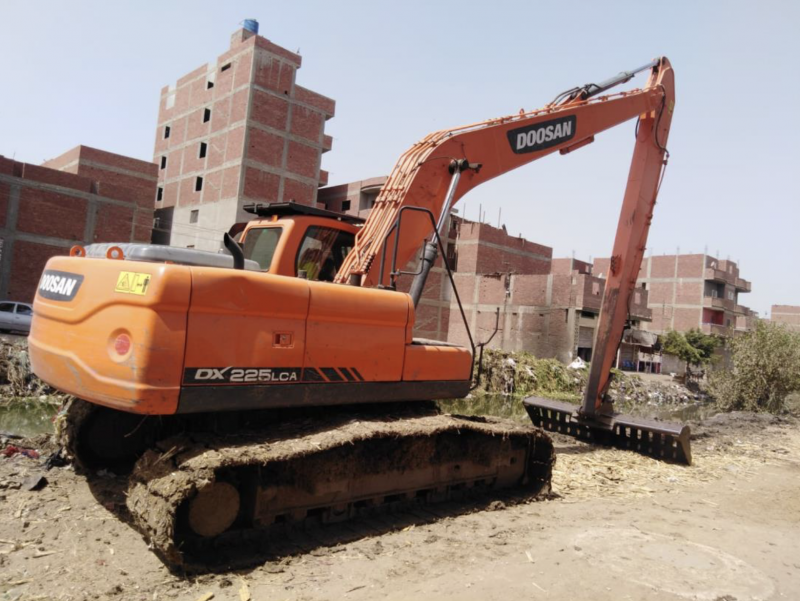National Agricultural Subsurface Drainage Project
Introduction
Egypt has made impressive progress on each of the SDGs, however, it continues to face challenges with SDG 1 relating to eradicating extreme poverty and SDG2 concerning diminishing of hunger. Poverty is mainly a rural phenomenon since nearly 77% of the total poor live in rural areas. It is reported that the poverty rate is more than 2.5 times the corresponding rate in urban areas. Agriculture is the main source of income in rural area and agriculture sector has shown a modest growth over the past few years. Therefore, Egypt continues to be a large-scale food importer.
The project is thus in full compliance with the GoE strategy to assure food security and increase the farmers’ earnings, reducing poverty rates in rural areas, through contribution to the national program of sub surface drainage with a view to achieve a better crop production. The project is also well aligned with the strategic objective priority of the IsDB Group regarding the promotion of agricultural development and food security as well as the 1440H vision thrusts of poverty alleviation and prospering the people.
The IsDB finance was made through Istisnaa - Jeddah Declaration initiative (JD) which aims at boosting food production (crop, livestock and fisheries) by revitalizing the agriculture sector so as to avert further food shortages in Member Countries. This initiative is most relevant and geared towards achieving the objectives of the project.

Objectives
The objectives of the project were to contribute to Egypt food security, promote sustainable agricultural development and economic growth, and improve welfare of the rural populations. The scope of the project included the provision of civil work infrastructure of renewing & constructing new drainage network as well as carrying out rehabilitation of open drains and pertinent service structures of the surface drainage system. In addition, acquisition of equipment essential for operation and maintenance were incorporated as well.
The scope also covered the farmers’ compensations for damage crops during implementation and other support elements including preparation of tender documents and supervision services, project auditing services and start-up workshop. Duration of 5 years was considered for implementation of the project.
Further objectives include:
- Sustainable use of natural agricultural resources
- Increasing the productivity of both land and water units
- Raising the degree of food security of the strategic food commodities
- Increasing the competitiveness of agricultural products in domestic and international markets
- Improving the climate for agricultural investment
- Improving the living standards of rural inhabitants, and reducing poverty rates in rural areas.
Positive Impact
Farmers are the main beneficiary of this project. More than 450,000 farm families benefited from increased agriculture land productivity and better-quality of soil improving their potential for increased yield and in turn higher income. Farmers showed strong participation in early stage of the project preparation where they facilitated identifying the malfunctioning drainage systems and expressed their commitments to payback the investment costs which demonstrated their awareness for importance of improvement of the drainage systems for productivity of their lands. Farmers are also paying land taxes which help the GoE in meeting the O&M expenses.
Additionally, voluntary Collectors Users Associations (CUAs) based on groups of 3-4 farmers are established by farmers in many areas to take care of drainage problems, among others and coordinate with EDADP on maintenance problems and water quality. Women took good part in these groups for public awareness and their participation is estimated at about 10 - 20% as reported during site visit. While EPADP, through its regional offices, supports the CUAs and complies with their requests for maintenance, it is important to strengthen more the grievance redress mechanism to handle and record complaints to solve disputes at the earliest possible time, which will be in the interest of all parties.
It is also of utmost importance to provide continuous backstopping by EPADP to the CUAs, especially sensitization on importance of agricultural drainage projects and drains' water quality and the necessity of preserving it in order to enable them manage their lands into profit making ventures. Most important is to legalize their status in order to enable their formal participation in decision-making. The other beneficiaries are the staff of EPADP and service providers who benefited from on-the-job training during project implementation, despite the fact that the project itself did not include any provisions for staff training or capacity building program tailed to drainage system and staff needs, which should be considered in future.